





ISO Rivolta is an Italian car and motorbike manufacturer active in the motor vehicle sector since 1938. Over the years, the company has taken various names, including Isothermos, Iso Autoveicoli Spa in 1952, Iso Rivolta in 1962, Iso Motors in 1973 and, in 2017, a return to ISO Rivolta. The Iso scooter was one of the company's early vehicles. It was equipped with a twin-cylinder engine inspired by the 125 Puch. Together with the Isomoto, the company was encouraged to add new versions and models such as the Isocarro, Iso GT, Iso Sport and Iso Ciclo.

In 1939 Rivolta founded ‘Isothermos’ a successful manufacturer of refrigeration units. After World War II his company began producing motor scooters and then motorcycles. By 1950, Isothermos was renamed Iso Autoveicoli and was Italy’s third largest two-wheel producer, behind Vespa and Lambretta. Rivolta produced home appliances, and Iso scooters, before moving to car production. In 1952 he developed the Isetta microcar (which he described as "half motorcycle and half car") and sold the car in Italy. The car became famous through the licensed production at BMW.
The company later produced sports touring cars starting with the Iso Rivolta IR 300, using Chevrolet 327ci engines and gearboxes. Rivolta used to say "At the wheel of a car I enjoy myself only above 120 mph." Iso entered racing, and won its class at Le Mans in 1965. In the 1960s Rivolta's company produced the Iso Grifo, Bizzarrini, and other sports cars, all using the GM drivetrain. The Bizzarrini is now a much sought after model, having been developed by Giotto Bizzarrini, an ex-Ferrari engineer who designed their GTO models.

The Iso company register changed to Iso Autoveicoli and in 1953 the Isetta was launched. The Isetta featured a distinctive "egg" shape, and was powered by the engine already fitted on the Isomoto 200, albeit increased to 236 cm³ with an aluminum cylinder and chromed cane. The Isetta was not a great success in Italy. Therefore, Renzo Rivolta decided to license the project abroad. The result was the VELAM Isetta for the French market and the Romi Isetta for the Brazilian and South American markets in general, and then the BMW Isetta. The Bavarian company was far from being a healthy company due to an unfavorable post-war reorganization and the unsuccessful high-end models it offered after the war. The launch of the BMW 250, i.e., the BMW-branded Isetta, was much more successful than in Italy. In the end, a total of 160,000 units were produced and sold in over 8 years.
First, BMW had to “refine” the motor and the chassis of the Italian bubble car. Even after it was modified by the BMW developers who were used to designing performance cars, the technical specifications seemed rather modest. At the start of production in 1955, the BMW Isetta 250 was redesigned to take a modified version of the 250 cc four-stroke engine from the R25 motorcycle. The single cylinder generated exactly 12 hp. BMW added another tyre so that the German car had four tires compared to the Italian’s three. In 1956, the Bavarian factory put out a version with higher performance - the BMW Isetta 300 with a 300 cc engine and 13 hp.
isetta

1953–1956
In the early 1950s, Renzo Rivolta developed the concept for a car that was halfway between a car and a motorbike, to bridge the gap between the classic motorcycle and the cheapest Italian car of the time, the Fiat Topolino.
The idea was to create a motorbike with a body in order to have a vehicle that was equally as economical, but with the protection offered by a normal car.
The company register changed to Iso Autoveicoli and in 1953 the Isetta was launched. This was a very special car with an iconic "egg" shape, powered by the engine already fitted on the Isomoto 200 and increased to 236 cm³ with an aluminum cylinder and chromed cane.
The Isetta was not a great success in Italy. Therefore, Renzo Rivolta decided to license the project abroad. The result was the VELAM Isetta for the French market and the Romi Isetta for the Brazilian and South American markets in general, and then the BMW Isetta. The Bavarian company was far from being a healthy company due to an unfavorable post-war reorganization and the unsuccessful high-end models it offered after the war. The launch of the BMW 250, i.e., the BMW-branded Isetta, could only deliver good results -- almost excellent, in fact -- given that the Isetta produced under license in Germany was much more successful than in Italy. In the end, a total of 160,000 units were produced and sold.




ir 300

1962-1970



The Iso Rivolta is a grand tourer introduced in 1962 and was the first luxury automobile introduced by the company which formerly specialised in affordable motor vehicles. For motor racing, an entirely different variant was made which bore a strong resemblance to the Ferrari 250 GT "Breadvan" and was homologated as a touring car. The idea behind this was a car that was usable everyday while being price between a Jaguar and a Ferrari. For mechanical development of the car, the company founder and chairman entrusted Giotto Bizzarrini of Societia Autostar. Bizzarrini developed a pressed steel and welded panel chassis which was designed to flex fore and aft and proved to be rigid along with cost effective to manufacture.
For the drivetrain, Iso would follow the same concept as adopted by De Tomaso and would choose an American built drivetrain. The car would be fitted with a Chevrolet 327 V8 engine mated initially to a 4-speed manual transmission from BorgWarner. It would be offered with a 5-speed manual transmission and a 3-speed automatic transmission as well later on in its production life cycle. The IR 300 would be joined by a high performance IR 340 variant in 1964.
797 units of the IR 300 would be made before production would end in 1970 amid slow sales. 167 cars made were the IR 340 models.
a3c

1964-1966
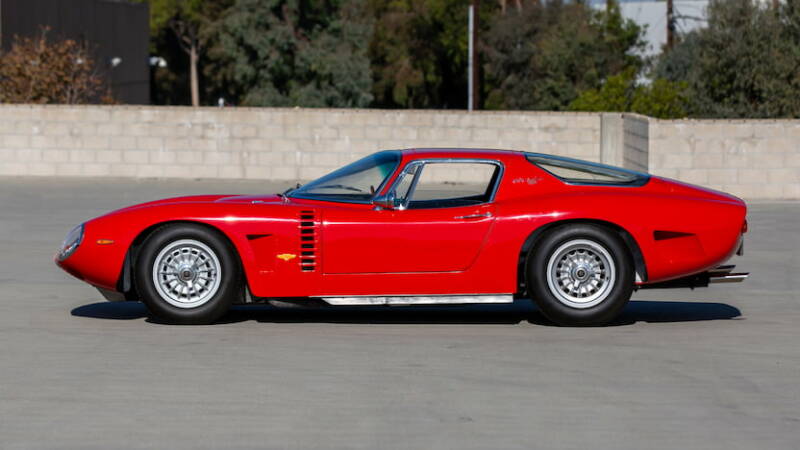
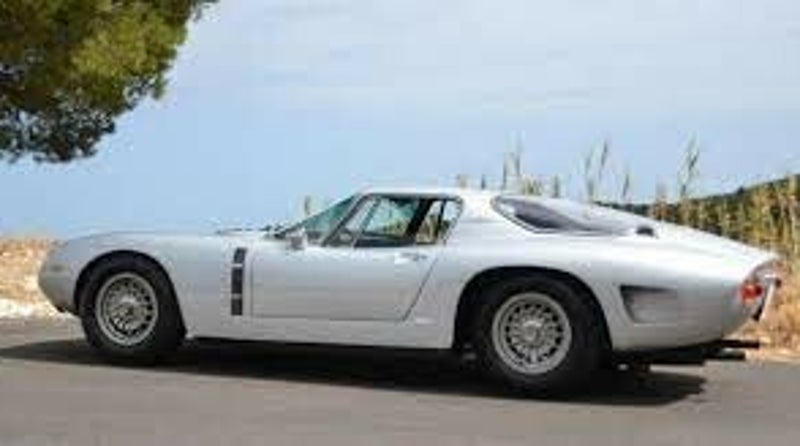

By 1963, Rivolta was finally convinced to finance the development of a more sporting Iso Rivolta. The result was the precursor to the 5300 GT, the Iso Grifo.Both Bizzarrini and Bertone worked extensively on two different cars which debuted at the 1963 Torino Motor Show. To satisfy Rivolta, both a competition Grifo A3/C and a 2+2 Grifo A3/L were displayed.
These cars had distinctly different bodies and different design objectives, but were in many ways the same. Both Grifos were styled by Giugiaro at Bertone, used the same chassis and the same engine. Immediately after the successful show, both versions of the Grifo were put into production.All of the chassis were built in Bizzarrini’s workshop at Livorno. Iso provided the engine and other components. Drogo manufactured and delivered bodies for the competition cars to Livorno for final assembly. The 2+2 grand tourer A3/Ls, were finished at Bertone where Bizzarrini shipped bare chassis.Bizzarrini really considered the A3/C to be his own. So much so, he registered the mark Grifo and put his own badges on some of the cars.
After the death of Renzo Rivolta in 1965, the relationship between Bizzarrini and Iso ended with only 25 Grifos built. Bizzarrini then sued Iso to acquire the necessary parts and finish 50 cars himself at Livorno. Without Iso, all cars after chassis #0224 were named Bizzarrini 5300 GTs and finally Bizzarrini’s name graced his design.The Iso Grifo AC3/C and Bizzarrini 5300 GT were very much the same product. When Bizzarrini took over full production, he had all the bodies assembled by Carrozzeria BBM instead of Drogo. Small design details were introduced on the BBM body including different door handles, rear lights and front signals.



iso a3c
bizzarinni 5300gt

grifo

1965-1974 a3/l

1965 gl

1968 7 litri

a3/l
The Iso Grifo is a limited production grand tourer manufactured by Italian automobile manufacturer Iso Autoveicoli S.p.A. between 1965 and 1974. Intended to compete with Grand Touring offerings from Ferrari and Maserati, it used a series of American power trains and components supplied by Chevrolet and Ford. Styling was done by Giorgetto Giugiaro at Bertone, while the mechanicals were the work of Giotto Bizzarrini.
The first production GL models appeared in 1965 and were powered by American Chevrolet small-block 327 (5.4-litre) V8 engines fitted to American supplied Borg-Warner 4-speed manual transmissions. The 5.4-litre engine was rated at 300 hp in its standard form and allowed the car to attain a speed of 110 km/h in first gear.
Iso Grifo Series II
In 1970, the Grifo Series II was introduced, with sleeker styling and hide-away headlights and powered by big-block Chevrolet 454 V8 (7.4-litre) engines. It was replaced in 1972 with the Grifo IR-8, which used a small-block Ford Boss 351 engine (5.8-litre) as its power-train. This was the last new Iso of any type, as the manufacturer went bankrupt; it shut down and ceased all operations permanently in 1974. The bankruptcy had a number of causes, perhaps the largest being the 1973 oil crisis, which significantly reduced demand for cars with large displacement engines.
grifo gl and a3/c
The production of the Iso Grifo GL started in 1965, but the Bizzarrini and Rivolta partnership quickly fell apart over the use of the name Grifo. This resulted in separate production of the Grifo GL and the competition Bizzarrini A3/C. The Grifo GL was produced at Bresso, while the A3/C was produced at Piero Drogo’s Sports Cars of Modena, under Bizzarrini's strict supervision. Bizzarrini refined his A3/C , eventually developing his line of models. Only 22 examples of the Grifo A3/C were made before Rivolta and Bizzarrini split.
targa
In October 1966, the first Grifo (car #97) with a targa top was shown at the Turin Motor Show. Designed by Bertone and featuring the stunning removable roof, the reliable 300hp Chevy 327 V8, and the coveted ZF 5 speed transmission. Only fourteen Series I Targas and four series II Targas were built.
7 litri
In 1968 the Grifo 7 Litri was introduced, featuring a Chevrolet L71 big-block engine, a Tri-Power version of the 427 engine. The massive power plant required several mechanical changes to the car in order to fit, i.e. strengthened chassis components as well as an enlarged engine compartment with reinforced mounts. A large hood scoop (dubbed "Penthouse" due to its size) was added to clear for the engine's deck height. It produced an officially advertised minimum of 435 hp at 5,800 rpm. The factory claimed the 7 Litri could attain a top speed of 300 km/h.
series II
In 1970, a styling change was made to the nose section of the car for the Grifo Series II. It was given a sleeker look and hide-away headlights. In the IR-9 "Can Am" version, the engine was switched from the 427 engines to the newer, even more powerful Chevrolet 454 7.4 litre engine.
ir-8
In 1972, the Grifo IR-8 was introduced, using a small-block Ford Boss 351 engines. These models can be recognized by their taller hood scoop. This was the final Iso automobile made, as Iso S.P.A. closed its doors in 1974 during the 1970s oil crisis
In total, 330 Series I and 83 Series II cars were built for a total of 413 cars, 90 of which were 7-litre versions. The rarest are the Series II 5-speeds (23 units) and the Series II Targa (4 units). Due to their rarity today Grifos are desirable collectibles. A former employee of Iso, Roberto Negri, runs a small company in Clusone, Italy, specializing in maintaining and restoring Grifos.
fidia




1967-1975
The Iso Fidia (or Iso Rivolta Fidia), initially Iso Rivolta S4, is a four-door sedan which was produced by the Italian automobile maker Iso Automoveicoli S.p.A. from 1967 to 1975. The Fidia, first presented at the Frankfurt Motor Show in September 1967, was the only four-door model from Iso. Production only got underway some time after the initial presentation of the car, and its European press launch which took place in Athens, came more than a year later, in February 1969.
The body design was the work of Giorgetto Giugiaro (then at Ghia). The interior featured polished wood and hand-stitched leather. High development costs drove the purchase price higher than that of a Rolls-Royce. The Fidia's main competitors were other contemporary luxurious and sporty sedans like the Maserati Quattroporte. The second Fidia made (and the first with right hand drive) was purchased by English rockstar John Lennon: the car had celebrity appeal.
The Fidia, like other Iso cars, was originally powered by a Chevrolet V8 engine, and was quite quick off the line (0-100 km/h in around 7 seconds). By 1973, after General Motors demanded payment in advance of shipment, the engine supplier had been switched and cars were delivered with a Ford 5.8 litre V8, matched with a ZF five speed manual gear box or with Ford's own 'Cruise-O-Matic' automatic gearbox.
In the rarefied market segment that it occupied, the car tended to find itself overshadowed by the Maserati Quattroporte, itself never a mass seller. Until Maserati in effect retreated from the market in response the economic shock that saw massive oil price increases, the Fidia was comfortably outsold by its Modenese competitor. In 1971 Iso produced just 15 Fidias, which rose to 21 in 1972 and slid to 20 in 1973. In total, there were 192 Fidias built.

The peak years of his career began in 1957, with a move from Alfa to Ferrari: ‘Il Commendatore’ Enzo Ferrari personally took the young engineer Giotto Bizzarrini to Maranello, a decision which paid huge dividends. As a development manager, designer, test driver and chief engineer, Bizzarrini influenced not only the development of the Ferrari 250 Testa Rossa and the Ferrari 250 GT SWB, but he also designed the world-famous Ferrari 250 GTO. Yet as well as being a brilliant engineer, Bizzarrini valued his freedom – and in 1961 he was one of the instigators of the Ferrari ‘palace revolution’.
After leaving Ferrari, Giotto Bizzarrini worked for Count Giovanni Volpi, for whom he designed the Ferrari 250 GTO ‘Breadvan’, as well as for tractor manufacturer Ferruccio Lamborghini in the development of the V12 engine for the marque’s first sportscar prototype. Iso Rivolta, too, benefited from Bizzarrini’s skill. It was with his help that the Iso Grifo came into being, first as the A3/L road car, and then as the A3/C race version, with an American V8 engine and lightweight aluminum body. It was a direct challenge to Ferrari.
With its Chevy V8, the Iso Bizzarrini is a true racing beast. Heavy but nonetheless ferociously quick, it demands maximum muscle use at each gear change, and quick wits to balance the vast power delivered through relatively skinny tyres. This, without doubt, is a car made by real men, for real men.
lele
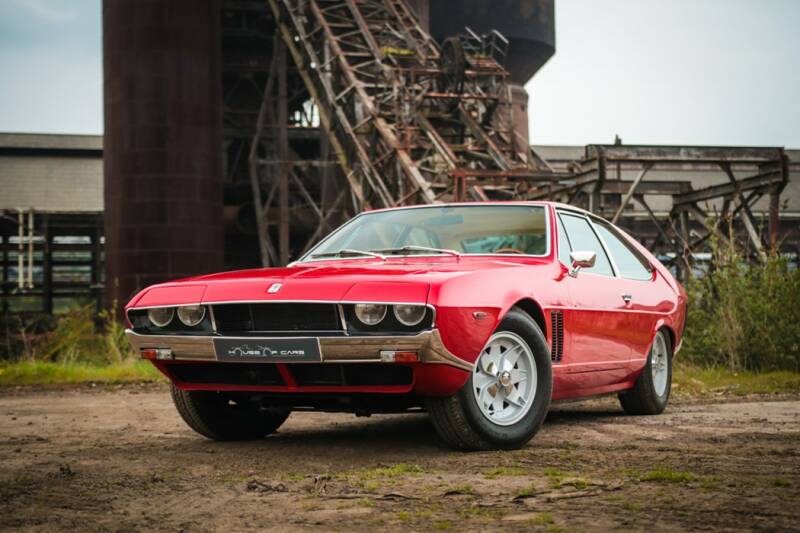
1969-1974
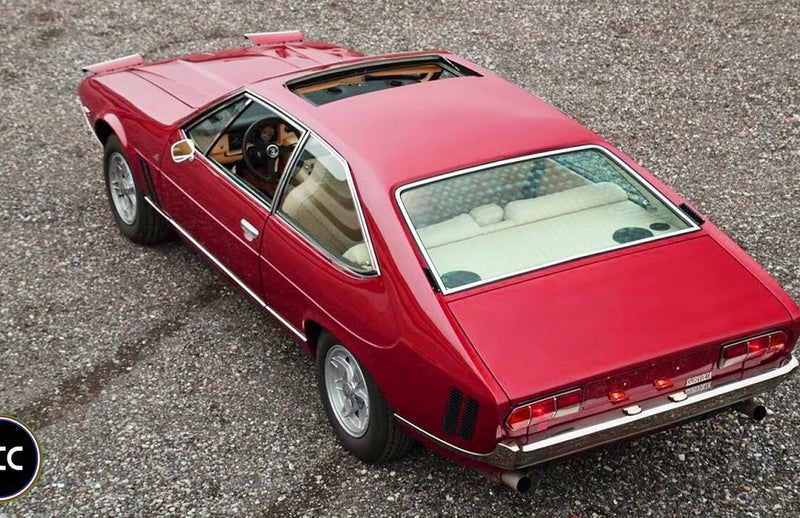


The Iso Lele (or Iso Rivolta Lele) is a grand tourer that was produced by the Italian automobile manufacturer Iso Automoveicoli S.p.A. between 1969 and 1974. The Lele, being a 2+2-seater, filled the gap between the Grifo and the Fidia while sharing its powertrain with its siblings. The styling was done by Marcello Gandini of Bertone. The car is named after Lele Rivolta, wife of Piero Rivolta (son of Iso company founder Renzo).
Meant as a Christmas present for Piere Rivolta's wife Rachelle (LeLe) Rivolta, it was decided to put the car into production to succeed the IR 300. It was first presented to the public at the 1969 New York International Auto Show and was made to compete against the Lamborghini Espada. The car was initially powered by a 350 hp General Motors V8 and was available with a 4-speed manual (later a 5-speed unit from ZF Friedrichshafen) and a 4-speed automatic transmission sourced from General Motors. In 1972, after about 125 cars had been produced, General Motors demanded that Iso pay in advance for the engines. Iso chose to replace the Chevrolet engine with Ford's Cleveland V8 rated at 325 hp. The automatic transmission was also sourced from Ford, while the manual transmission remained unchanged.
The angular Gandini styled body and the comfortable nature of the car did little to help sales and only 285 cars were made. About 160 Ford-engined Leles had been built by the time production wound up in 1974 due to Iso's bankruptcy.
lele ir6 marlboro
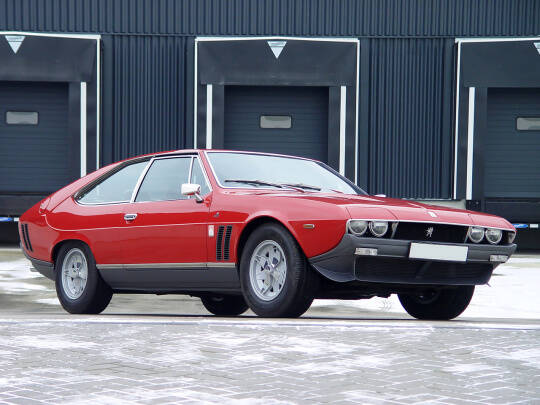


Following the agreement with Philip Morris that led to the creation of the Iso-Marlboro brand in Formula 1, Philip Morris commissioned Iso to construct two specially modified Leles for their Formula 1 Team Drivers. Modified by Bizzarrini these two cars were stripped of creature comforts to reduce weight. The cars had subtle differences from each other and no car was identical. The cars, which were made for drivers Howden Ganley and Nanni Galli, had a unique dash layout that did not appear on any other Lele. Bizzarrini then modified the 351 Cobra Jet engine which was now rated at 360 hp. Painted in Marlboro Red with Marlboro badges on the front fenders Ganley's car debuted on the Iso Rivolta stand at the 1973 Geneva Auto Show. Galli's car was painted in white. The exterior styling cues from these two cars were used to develop the Lele Sport which also had a modified version of their dash layout. Philip Morris also commissioned at least two more cars for promotional purposes to resemble the Marlboro cars given to its drivers, called the Marlboro Replicas. These cars were essentially Lele Sports with Marlboro badges on the fenders. They also retained the creature comforts removed from the original Marlboro cars.
varedo


1972



The Iso Varedo was a concept car produced by Italian car manufacturer Iso Autoveicoli S.p.A. in 1972 styled by Ercole Spada. It was unveiled at the 1972 Turin Motor Show. Only one Varedo was ever built.
The Varedo is powered by a mid-mounted 351 cubic inch (5.7L) Ford 351 Cleveland V8 making 325 bhp. Power is driven to the rear wheels through a ZF 5-speed manual transmission. The Varedo also used a full fiberglass body in order to save weight.
In 1973 Piero Rivolta sold the company to Dr. Ivo Pera and that was the end for the Varedo. He didn’t want a new model and left the car in a corner of the factory were Piero Rivolta found it later, damaged and in pieces, after Iso had to close its doors in December 1974 due to the oil-crisis. He bought the car and had it restored to its present perfect condition. It can be seen at the Iso Museum in Sarasota FL USA.
grifo 90

1990

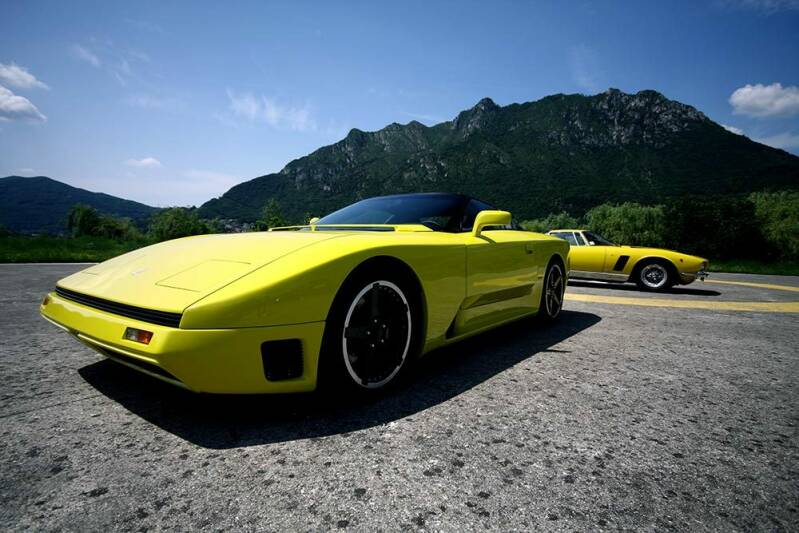

The Iso Grifo 90 was built as a life-size wooden model designed by Marcello Gandini in the early 1990s, it was commissioned by Piero Rivolta, who believed the time was right to bring the Iso marque back from the grave.
Rivolta commissioned Dallara to develop the chassis and powertrain – although there’s no record of what Dallara intended, Iso had a long history of using American V8s with matching transmissions due to their reliability, availability, and hefty power output.
As is often the case with low-volume car manufacturers, the Iso Grifo 90 never came to be, and was largely forgotten to all but a few diehard Iso collectors. Normally this would be the end of the story, but in 2007 the original Gandini designed model was discovered triggering a project led by Federico Bonomelli to finally build the Iso Grifo 90 just as Piero had intended.
Due to the long Iso history of using Corvette engines and other parts, it was decided to based the new car on the underpinnings of a C5 Z06 Corvette, with a ZR1 engine tuned by Callaway to produce over 490 hp.
zagato vision gran turismo


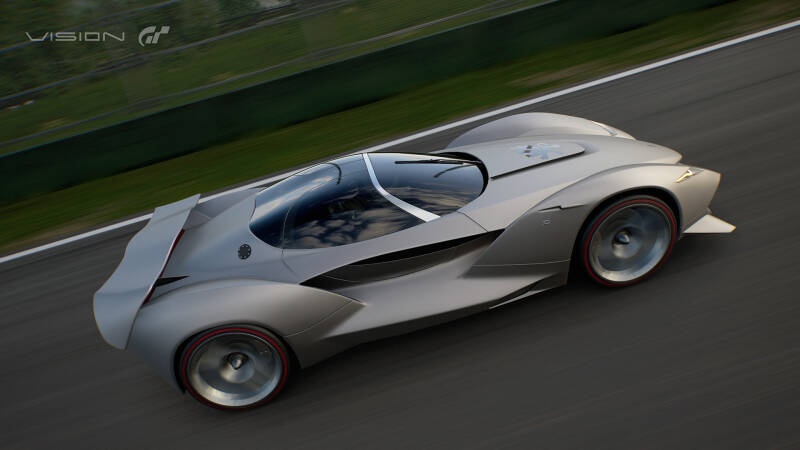

2017
The concept car was introduced in October 2017 at the Gran Turismo booth during the 45th Tokyo Motor Show. It is part of the Vision Gran Turismo and is inspired by the Iso Rivolta, a coupe that Iso produced from 1962 to 1970. It is designed by Italian coach builder Zagato and the concept car uses a 6.2 liter V8 from Callaway. I will be capable of 100 km/h acceleration in 2.7 seconds. The original car from the 1960s also used an American powertrain: a Chevrolet V8 engine. Zagato was open to start producing the car in very limited numbers and had reportedly open a short list for potential buyers. The game developers asked multiple brands to design a unique digital car for their new PS4 game and Zagato was one of them. They took it a step further, deciding it was time they relaunched the Iso Rivolta brand, being the owners now, with a real vehicle – not just a digital one. Zagato is planning to build from three to five exemplars – or maybe more, should the project be successful.

gtz
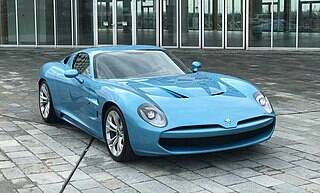
2020



The GTZ project was first conceived according to its design, which takes inspiration from the Iso Rivolta A3/C as well as other iconic cars from the '60s up to today, like the Porsche 911 and the Ford GT. From there, this blend of the original car's personality with modern elements is taken even further by basing the car's mechanics on the Chevrolet Corvette c7.
The supercharged 6.2-liter V8 of the Corvette Z06 sits under the hood of the GTZ producing 660 bhp and there is a choice between a 7-speed manual transmission and an 8-speed automatic with torque converter. Its performance, therefore, is impressive, with 0-100 km/h per hour happening in just 3.7 seconds and a 310 km/h top speed.
The car's dynamics are dominated by the engine's practically infinite reserve of thrust, which is extra enjoyable thanks to the enveloping sound of this 8-cylinder engine that is so generous in terms of displacement.



ISO Marlboro Williams F1 IR01 1973



In 1973 Iso entered the world of Formula One. The idea came from Iso's sales manager who had met Frank Williams on a car show. They managed to get Philip Morris and Piero Rivolta interested in the same idea and the Iso Marlboro Formula One Team was born. After working for the DeTomaso Formula One Team, March and racing his own Politoys formula one car Frank Williams was now working together with Iso.
They started with the intention of participating in every race to gain experience and publicity for the team. The car was a modified 1972 (Williams Politoys) chassis and Iso knew it would be hard to score championship points. At least many said they had one of the best looking cars in the field!

Iso Marlboro IR
Engine: Ford Cosworth DFV (90.V8) 85,7x64,8mm 2990cc 460hp / 10.500 rpm.

ISO cockpit with Arturo Merzario 1974



At the start of the 1973 competition the drivers were Italian Nanni Gali and Howden Ganley from New Zealand. Other drivers that year were Pretorious, Pescarolo, McRae (who crashed his car), Van Lennep, Schenken and even Jacky Ickx!
Best result came from Ganley, 7th in Brazil, Dutch driver Van Lennup, 6th at Zandvoort, and Ickx, 7th in the US and Ganley 6th in Canada. The first four races were run with the FX3 chassis and in Spain Iso introduced the Iso Marlboro Ford IR. Engine was for both models the famous Ford Cosworth V8.
In 1974 drivers were Merzario and Belso. Merzario was the number one driver and he stayed with the team the whole year. His best result was 4th in Italy, and he qualified 3th in South Africa finishing 6th. The other car was driven by many drivers: Van Lennep, Robarts, Jabouille and Lafitte.

name
country
season entries
total drivers
first race
last race
best qualifying
best result
Iso Marlboro
United Kingdom
2
13
1973 Argentine F1 GP
1974 USA F1 GP
3th - 1974 1974 South African F1 GP
4th - 1974 1974 Italian F1 GP














Create Your Own Website With JouwWeb